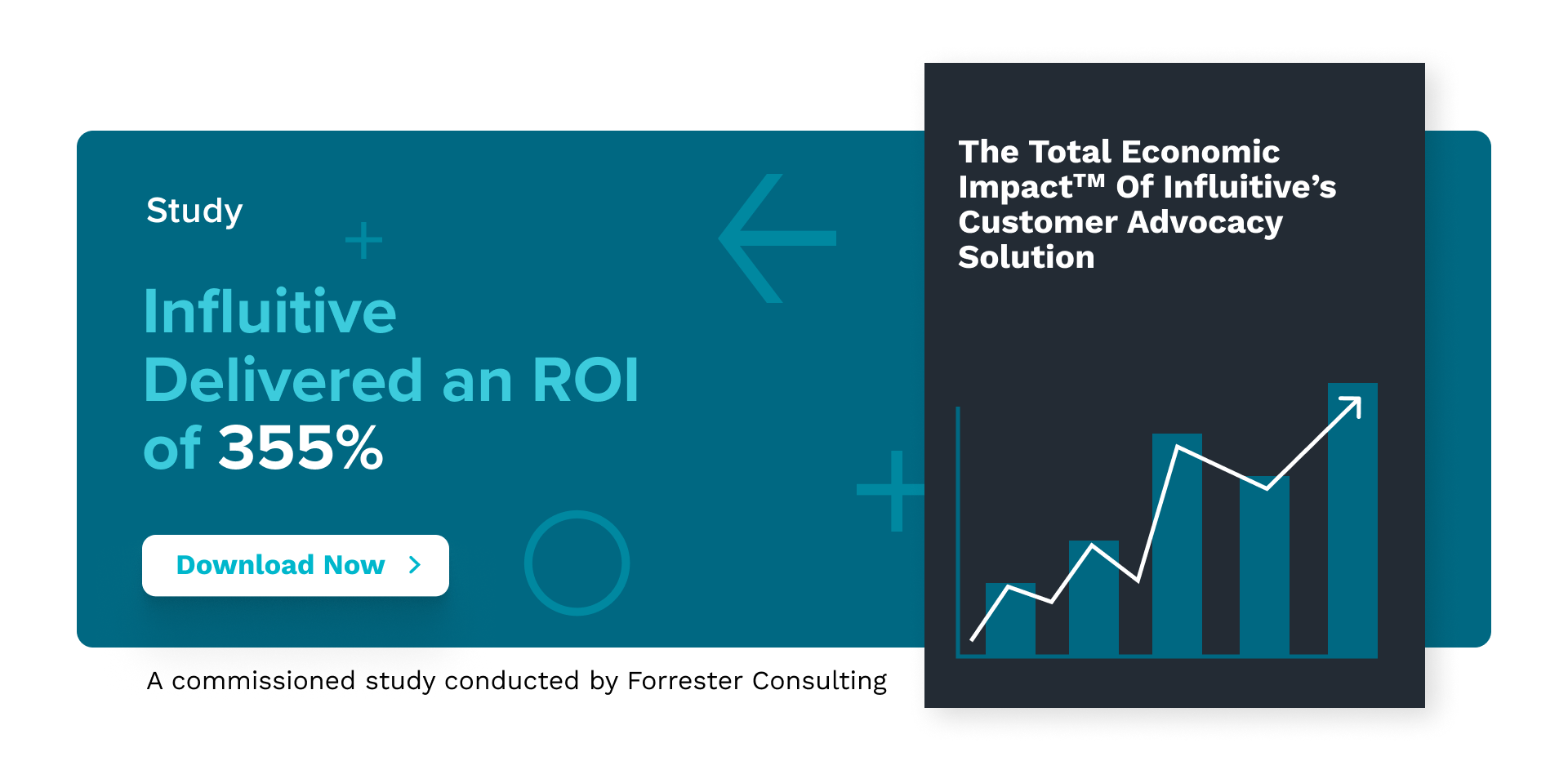When it comes to making purchase decisions, no one is more influential than a fellow customer. Companies have long recognized the power of customer reviews and referrals to increase sales. Voices that champion your brand carry far more weight than paid ads. That’s why businesses are investing in customer advocacy programs.
This article will explore what customer advocacy is, the benefits of implementing a customer advocacy program, and how to get started.
What is Customer Advocacy?
Customer advocacy is when customers voluntarily promote a company’s brand and products. They do this in various ways, including recommending a product to friends and family, leaving positive reviews online, sharing content on social media sites, or even attending promotional events for the company.
What is a Customer Advocate?
Anyone enthusiastic about a company’s products or services can be considered a customer advocate. They are typically highly engaged with the brand and have an emotional relationship with it.
Why is Customer Advocacy Important?
Advertising has become so congested and noisy that people learned to tune it out. However, people perceive the customer voice as more authentic and trustworthy. This is why customer advocacy has become such a powerful tool for businesses to leverage.
Customer advocacy can help build brand awareness and loyalty, drive organic sales, and increase customer lifetime value. It also allows companies to create positive relationships with loyal customers and potential customers alike, resulting in improved customer service experiences that lead to higher levels of satisfaction.
Types of Customer Advocacy
Customer advocacy can come in many forms. Here are some of the most common types:
Social Sharing
Social sharing is when customers share their experiences about a company or product on their personal social media accounts. This can be anything from writing a review to making a video about the product.
Customer advocacy can be further increased on social media if the company employs social media listening tactics. These involve listening to conversations about the company’s products and services and responding promptly.
Reviews and Testimonials
Reviews and testimonials are important forms of customer advocacy. Customers are more likely to trust the opinion of someone who has already used a product than they are to trust a company’s marketing claims.
This is why it’s essential for companies to encourage customers to leave reviews or write testimonials about their experience.
References
Happy customers can be excellent sources of references. They can recommend the company to other potential customers, which is a great way to increase word-of-mouth marketing. The company can use a reference program to build a pool of brand advocates who willingly recommend their offerings.
Referrals
Referrals are when customers refer others to a company’s products or services. They are one of the most effective forms of customer advocacy because they come from people who already trust and are familiar with the brand.
Companies can use a referral program to incentivize referrals with discounts, points, or other rewards to encourage customers to promote their business.
Speaking Engagements
Companies can invite advocates to speak at events or conferences. It’s an excellent way to showcase the company’s product in a more personal way, while also demonstrating the customer’s loyalty and enthusiasm for the brand.
Customer Advisory Boards
A customer advisory board is a group of customers who provide customer feedback and advice to the company. The board members are selected based on their expertise and experience with the product or services. This allows companies to gather insights from customers they wouldn’t otherwise have access to.
Why You Need a Customer Advocacy Program
A customer advocacy program is an organized approach to engaging customers as advocates and encouraging them to promote a company’s products. It is designed to create positive experiences, reward customers, and drive sales.
Customer advocacy programs can be used in various ways, such as:
- Creating customer referral programs
- Developing customer loyalty programs
- Hosting customer appreciation events
- Encouraging customers to leave product reviews or take surveys
- Offering discounts or rewards for referrals or reviews.
The benefits of customer advocacy are clear – increased brand awareness, more organic sales, improved relationships with customers, and ultimately more revenue.
How to Build a Customer Advocacy Program
Building a successful customer advocacy program requires careful planning and execution. Here are the steps to get started:
1. Set Your Goals
Before launching a customer advocacy program, you need to identify your goals. Defining success is the first step in creating an effective program.
An example of a goal could be increasing your customer lifetime value by 20%. If we’re looking at a short-term goal, it could be driving 10 new referrals in the next month.
2. Create Customer Personas
Buyer personas are an essential part of any business strategy, and that includes advocacy marketing. A buyer persona is a detailed profile of your ideal customer. This will help you determine what type of rewards and incentives best suit each segment of your audience.
3. Recruit Your Best Customers
There’s no better brand endorser than your strongest advocates. To find them, you can look at customers who have left positive customer feedback, shared content about your products or services, or referred friends and family.
You can also develop a lead scoring model, which measures the value of each brand advocacy and helps identify your best customers. Once you find them, make sure not to over-leverage your customers. The goal is to reward and incentivize them, not burden them with too many requests.
4. Launch Your Customer Advocacy Program
After identifying your goals and gathering your strongest advocates, it’s time to launch your program. This is where you will start to see the real benefits of customer advocacy as your customers spread the word about your products and services.
To implement your customer advocacy program, your business can benefit from using a customer advocacy platform. An ideal platform helps you track your customer’s activity and reward them for their efforts.
5. Measure Your Performance
It’s a lot easier to measure the success of your customer advocacy strategy if you have a platform in place. A good platform will allow you to track metrics such as referral volume, conversion rate, and average purchase value. With this information, you can measure your ROI and make adjustments to your program as needed.
Review your goals and metrics to determine if you implemented a successful customer advocacy program.
6. Generate Buy-in Across Your Company
It’s important to generate buy-in from your entire company. While customer marketing is a task for the marketing team, customer advocacy should be supported by all departments. Doing this helps drive a company to be customer-obsessed, meaning their decisions are always based on addressing customer needs.
If your customer service team is involved in the process, they can provide feedback to the marketing team on what works and what doesn’t. Sales teams should be encouraged to set up meetings with their advocates. And product teams should keep their customers updated on new features or improvements.
7. Design for Growth and Scalability
A huge component of customer advocacy programs is customer engagement. These programs allow business teams to learn from customer experience and use this data to make more informed decisions.
Customers are critical to business growth, so formulating a customer-led growth strategy is not only important but necessary. By understanding how customers use your product, each department can design initiatives to ensure customer satisfaction and loyalty.
8. Proactively Listen to Your Customers as Accounts and People
An effective customer advocacy program prioritizes building connections. It means actively listening to your customers, understanding their needs and pain points, and responding to feedback in a timely manner.
You can start by reaching out to customer accounts on social media or via email. Ask them how they use the product or service and what features would make it better. You can also create surveys asking for feedback about the customer experience.
The key is to ensure that you are actively listening, so you know what matters most to your customers and how best to engage with them.
9. Build a Customer Community
Customers value brands that allow them to voice their opinions and connect with other like-minded customers. Fostering a customer community where customers can openly share their experiences and give feedback is a great way to build trust with them.
You can create content such as interviews with successful advocates, webinars, and podcasts discussing customer case studies, or even host virtual events that bring together customers worldwide.
10. Personalize Your Appreciation
When it comes to customer advocacy, personalization is key. Customers have different interests and preferences, so tailoring rewards and incentives is important.
But it’s not just about rewards. Genuinely expressing gratitude is essential to build a strong relationship with your customers. A simple thank you note or phone call can go a long way to show your appreciation. These deeds remind customers that there’s a human connection behind the company.

















































